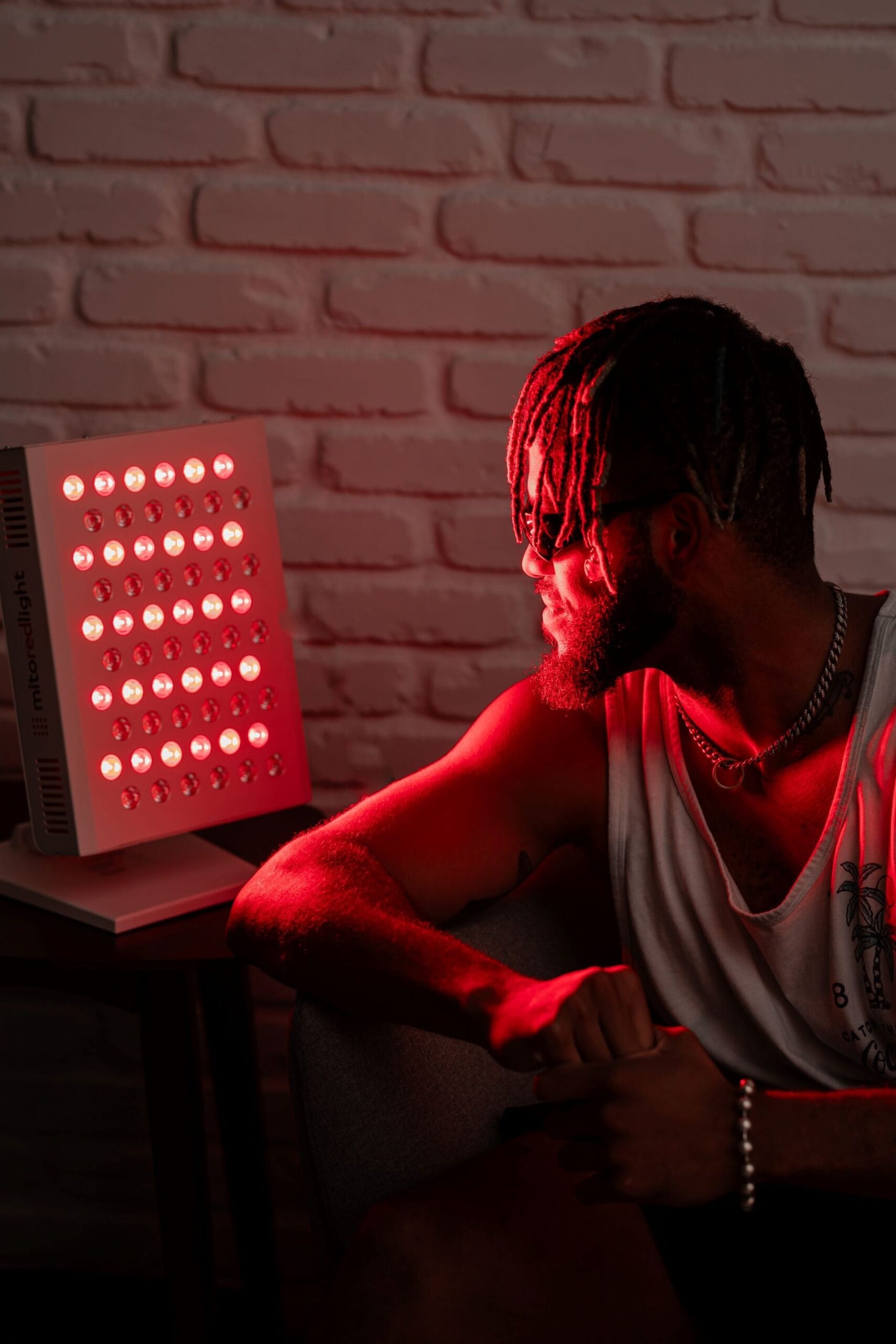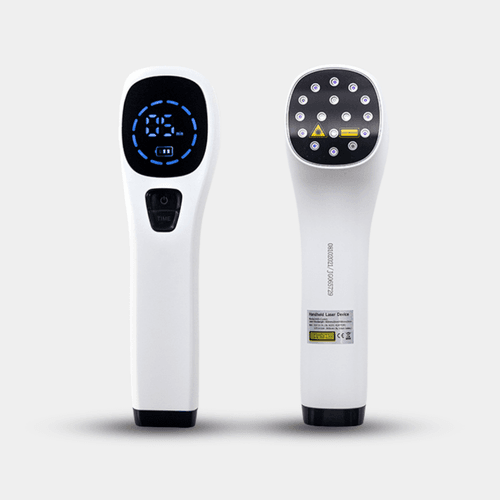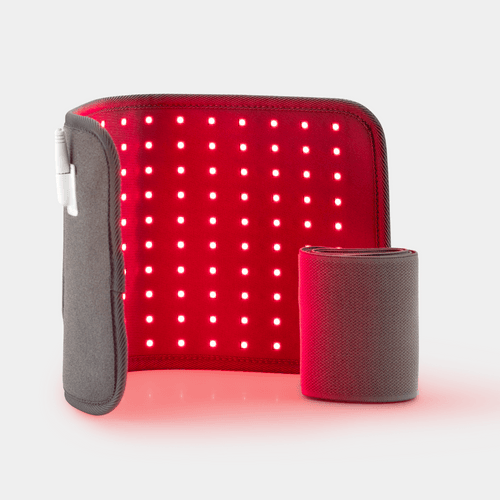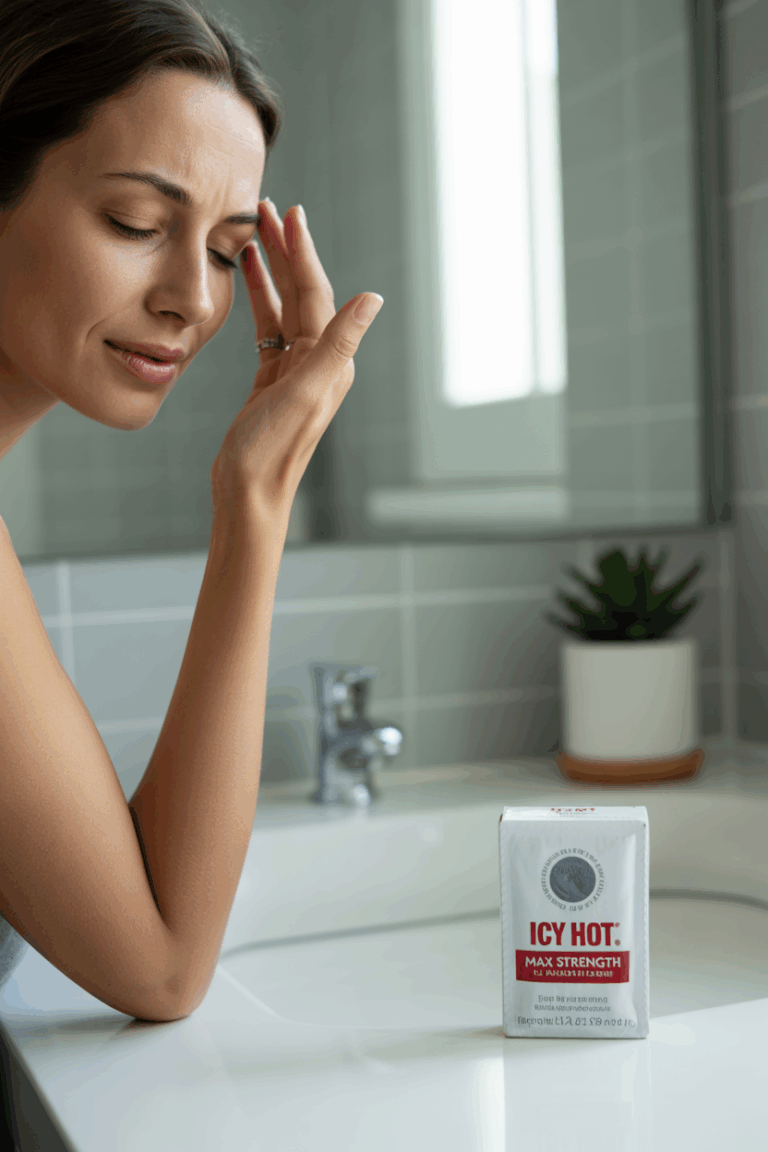7 Surprising Benefits of Red Light Therapy for Arthritis (Natural Pain Relief?)
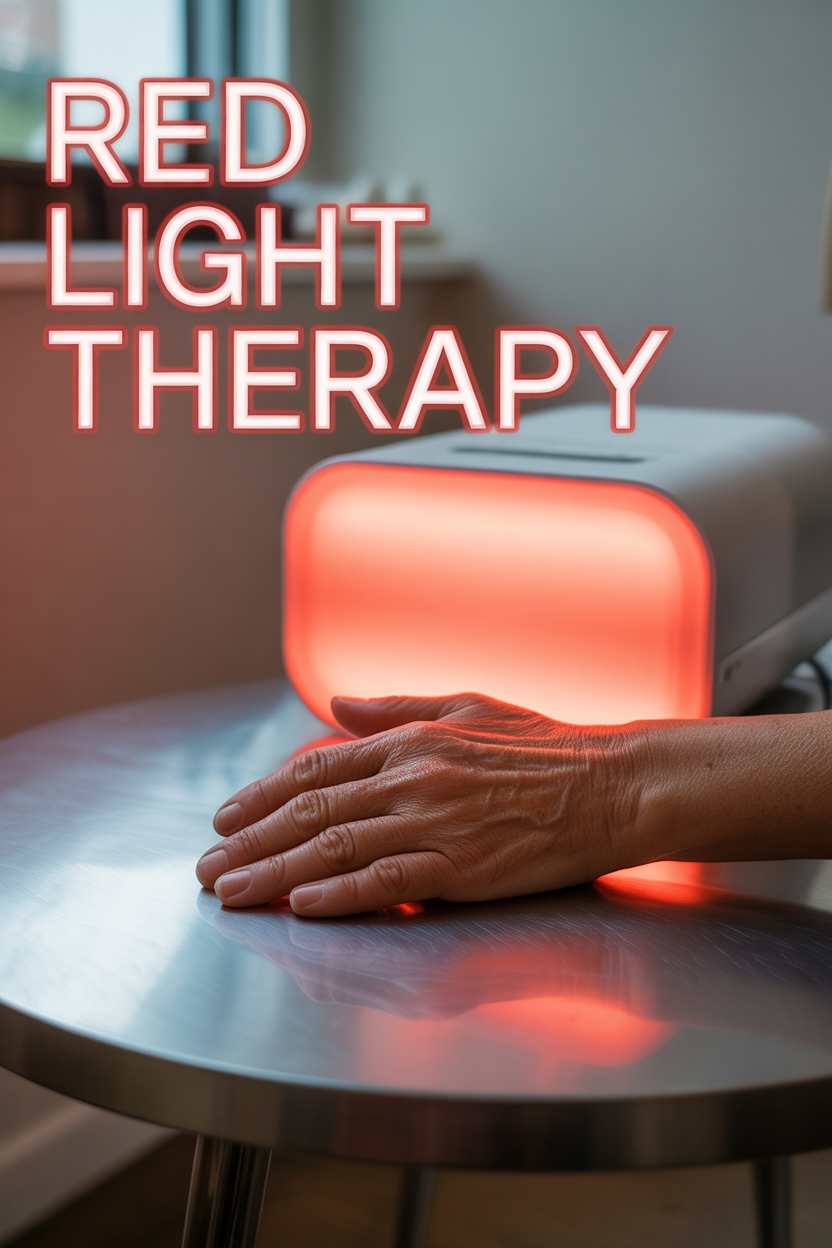
A Personal Journey: How Red Light Therapy Helped My Arthritic Knee

My struggle with arthritis in my right knee began after a hard fall on the ice in 1978. The fall left a loose bone chip that floated in my knee, causing damage over the years. I eventually had surgery to remove it.
Later, I discovered Bill Phillips’ “Body for Life” program and began exercising seriously. My strength grew until I could do deep squats with a barbell overhead. I felt strong, but my knee was quietly getting worse.
The breaking point came suddenly. One day, I twisted to answer the phone, and my knee exploded with pain. It was a level of hurt I had never felt before.

After cortisone shots and months of physical therapy, I could walk, but stairs were a huge problem. My knee offered little support, making every step a careful, painful effort.
Then, I found red light therapy. I started using a device on my knee with hope, and the results were truly remarkable. Today, I can take stairs two at a time without pain, and my knee no longer gives out on me.
The combination of physical therapy and consistent red light therapy made a world of difference. I no longer think about knee replacement surgery because I am not in constant pain.
While I am careful with deep squats, my knee feels reliable for standing, walking, and climbing. I’m so happy with this progress. Red light therapy for arthritis can be highly effective with the right device and consistent use, helping to reduce inflammation and support natural repair.
How Does Red Light Therapy Work for Arthritis?

Red light therapy addresses the inflammation that causes arthritis pain and stiffness. It works by sending specific wavelengths of light to your cells, which triggers a chain reaction of helpful effects. This process is called photobiomodulation.
Studies show it has a pain-relieving effect, similar to aspirin. The light energy helps free up nitric oxide from the mitochondria, which are the powerhouses of our cells. This nitric oxide then enters the blood vessels, causing them to widen.
This widening, called vasodilation, increases blood flow. Better blood flow brings more oxygen and nutrients to the affected joint, giving your body the raw materials it needs to heal. The light also energizes the mitochondria, getting your body’s natural energy factories back online.

This process gives your cells the energy they need to use those materials and repair themselves. The therapy also helps block inflammatory signals like cytokines and prostaglandins.
Amazingly, red light therapy slows the COX-2 enzyme, which creates pain signals. This is the same way NSAIDs like Ibuprofen work, but photobiomodulation does it without the risk of negative side effects.
Finally, the therapy encourages autophagy, your body’s cellular cleanup process. This helps clear away waste and toxins from the joint area, further reducing inflammation and creating a healthier environment for healing.
What Are the Best Wavelengths for Arthritis Pain Relief?

To find the most effective treatments, I explored Dr. Vladimir Heiskanen’s Photobiomodulation Database, focusing on studies about joint health. The big question was: which wavelengths provide the best results for easing arthritis pain and inflammation?
While my quick review isn’t a formal scientific study, my findings are very similar to official ones. The research strongly points to specific parts of the light spectrum. Understanding these wavelengths is the first step in picking an effective device.

Light is measured in nanometers (nm). Different ranges have different colors and can reach different depths in the body. Red and, especially, near-infrared light can penetrate deep enough to affect your joints.
| Wavelengths | Color Name |
|---|---|
| 625-740 nm | Red |
| 740-1400 nm | Near Infrared (NIR) |
After looking at successful studies—those that showed major improvement—a clear pattern appeared. Infrared wavelengths were used in most of the effective trials.
While a few studies showed good results with other colors like red, blue, and green, the strong evidence supporting near-infrared light for deep joint relief makes it the main choice for arthritis therapy.
| Color | Successful Arthritis Studies |
|---|---|
| Red | 25 |
| Near Infrared | 104 |
A Closer Look at Light Spectrums for Joint Health

While near-infrared (NIR) light is the most studied option in arthritis research, it’s helpful to look at what science says about other wavelengths. Some studies have explored red, blue, and green light with promising, though less certain, results.
Red Light (625-740 nm): Twenty-four out of 33 studies using red light showed significant pain relief. The 633 nm wavelength was especially successful, with 11 of 13 studies showing positive results. Interestingly, 660 nm, a common wavelength in many devices, had a lower success rate in these arthritis trials. This might mean the treatment time or method is a key factor.
| Red Wavelengths | Successful Studies | Success Rate |
|---|---|---|
| 630 nm | 4 | 100% |
| 633 nm | 11 | 85% |
| 670 nm | 2 | 100% |
Near-Infrared Light (740-1400 nm): Here, the evidence is very strong. Infrared light penetrates deeper into your tissues, making it perfect for reaching joints. Wavelengths like 808 nm, 830 nm, 904 nm, and 1060 nm have been studied many times.
The 1060 nm wavelength had a 100% success rate in the studies reviewed, with all 12 trials reporting positive results. Likewise, 808 nm, 830 nm, and 904 nm were tested repeatedly and consistently showed they could fight arthritis pain and inflammation.
| Near Infrared Wavelengths | Successful Studies | Success Rate |
|---|---|---|
| 808 nm | 21 | 81% |
| 830 nm | 18 | 78% |
| 904 nm | 12 | 92% |
| 1060 nm | 12 | 100% |
Other Wavelengths: A few studies looked at blue and green light. While some showed positive effects, like three successful studies with 536 nm green light, there isn’t enough data to make strong recommendations. For now, the most reliable choice for arthritis is a combination of red and near-infrared light.
What the Research Confirms About Effective Wavelengths

In a 2019 review, Drs. Gendron and Hamblin discussed why photobiomodulation isn’t yet widely accepted in medicine. They noted the “bewildering array of different wavelengths and dosimetric parameters” used in studies. This has created confusion, even though there is strong evidence that it works.
Their review confirmed that red light therapy significantly relieves arthritis pain. They found it often works better than drug therapy and does not have the same side effects. The key is to use the most successful wavelengths and treatment plans.
The researchers looked at 270 arthritis studies published between 2000 and 2016, covering joints from the ankle to the back. Their findings on the most effective wavelengths matched what my own research found.
| Best Arthritis Wavelengths: A Comparison | |
|---|---|
| My Cursory Wavelength Scan | Drs. Gendron & Hamblin’s Review |
| 630 nm, 633 nm | 632.8 nm, 635 nm, 670 nm |
| 808 nm, 810 nm, 820 nm | 780 nm, 810 nm |
| 830 nm | 830 nm |
| 904 nm | 904 nm |
| 1060 nm | 1064 nm |
This overlap provides strong confirmation. Wavelengths in the 630s (red), the 808-830 nm range (NIR), and around 904 nm and 1060 nm (NIR) are consistently shown to be highly effective for fighting arthritis.
The good news for anyone with joint pain is that you don’t need to find one single “magic” wavelength. Many different frequencies are proven to reduce arthritis pain. This gives you several great options when choosing a device.
How to Choose a Red Light Therapy Panel

If you want to treat larger areas like your back or get a versatile stationary unit, red light therapy panels are a great choice. They deliver powerful, wide coverage, making them ideal for treating back, shoulder, or knee pain. Here are two top choices that include the best wavelengths for arthritis.
Mitoadapt 3 Red Light Therapy
The Mitoadapt 3 is notable for its design, which features a dual-chip, quad-lens array. This technology helps the light reach deeper tissues, making it a great option for the muscle and joint pain that comes with arthritis.
A key feature is the ability to switch between eleven different wavelengths. This flexibility lets you target your therapy with the specific red and near-infrared frequencies that are proven to help with joint inflammation and repair.
It’s also lightweight and portable, so it doesn’t need a permanent setup. You can easily use it anywhere in your home for convenient, daily sessions. This makes it easy to fit pain relief into your daily routine.
USE COUPON RED FOR 5% OFF
Mito Pro 300
The MitoPRO series is known for offering great performance for its price. Its multi-wavelength design specifically uses peak light spectrums, including those helpful for arthritis, to boost cellular activity and promote healing.
You can customize your therapy by selecting red light, near-infrared light, or a combination of both. This allows you to tailor treatments, using NIR for deep joint penetration and red light for skin health and surface-level inflammation.
The simple digital control panel has a built-in timer, making it easy to manage your sessions. Using a Mito Red Light device may help temporarily increase local blood circulation, relieve stiffness, and support your cells’ energy production—all key benefits for managing arthritis.
USE COUPON RED FOR 5% OFF
What Are the Best Wearable Devices for Arthritis?

When you need to treat a specific joint like a knee, elbow, or wrist, wearable red light therapy devices offer wonderful convenience. Their flexible designs wrap around the body part, making sure light is delivered right where you need it most. This hands-free design lets you enjoy therapy while relaxing or even moving around.
Celluma Pro Red Light Therapy
The Celluma Pro is an FDA-cleared device with settings designed for pain and aches. Its flexible design allows it to mold over any body part, ensuring close and consistent treatment for joints and muscles.
It is specifically built to address joint and muscle pain by reducing inflammation and improving circulation. This provides soothing relief from ongoing pain conditions like arthritis.
This device is also very versatile, offering programs for acne and wrinkles. This makes it a great wellness tool for the whole family. Its durable construction is built for consistent, hands-free use.
Mitoquad Red Light Therapy Belt
The Mitoquad belt is designed for focused, hands-free pain relief. It’s lightweight, compact, and uses four effective wavelengths: 630nm, 660nm, 810nm, and 850nm. These are all great frequencies for reaching deep into joints to ease stiffness and support cell function.
This device uses TriChip™ technology with over 1,200 LED chips for wide and precise coverage. It may help provide temporary relief of stiffness and increase local blood circulation, which is very important for managing arthritis symptoms.
You can power it with a standard wall outlet or a portable power bank, giving you the freedom to move during your treatment. With five intensity levels, you can customize your session for comfort and the best results.
USE COUPON RED FOR 5% OFF
Are Handheld Devices a Good Choice for Arthritis?
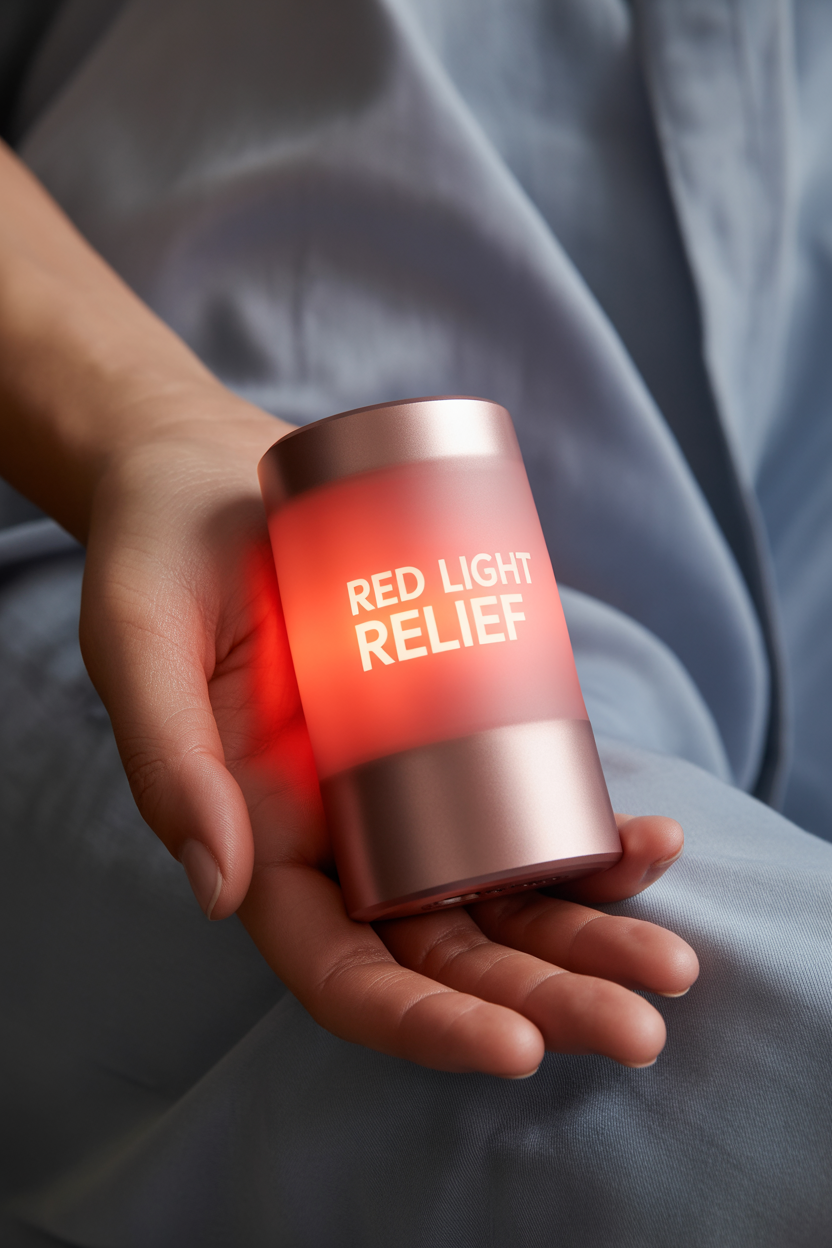
For excellent portability and precise treatment, handheld devices and therapy pads are a great choice. They let you apply focused light energy directly to small or hard-to-reach joints, like those in your hands, feet, or neck. These devices are perfect for travel or for using while you relax on the couch.
Novaa Extra-Strength Healing Laser
This handheld laser offers a more affordable option for deep, targeted relief. It may help reduce chronic arthritic pain by penetrating deep tissues to activate cellular repair. It also helps increase collagen production, which is important for joint health.
The Novaa laser can be used along with physical therapy to make it less painful and may promote faster healing by reducing inflammation. Its portability and long-lasting battery make it very easy to use every day.
Users report that it provides relief and helps them exercise more comfortably, which is key to improving mobility. The device also comes with a 60-day risk-free trial, so you can see the benefits for yourself.
Novaalab Red Light Therapy Pad
This is a popular option because it is easy and effective to use. The Novaalab Light Pad offers temporary relief of minor pain and stiffness in the back, knees, and neck. It’s a drug-free, non-invasive way to gently ease mild aches.
The pad features 300 infrared (850nm) lights and 150 red (660nm) lights, an effective combination for deep healing. Customers often report fast pain relief and less inflammation, which are two of the main goals of arthritis care.
It’s designed to be easily used in your daily routine—just wear it for 20 minutes a day. Its lightweight and comfortable design makes it a practical choice for consistent home use, with many users saying it helps with their joint pain and arthritis.
How to Create Your At-Home Therapy Routine for Arthritis
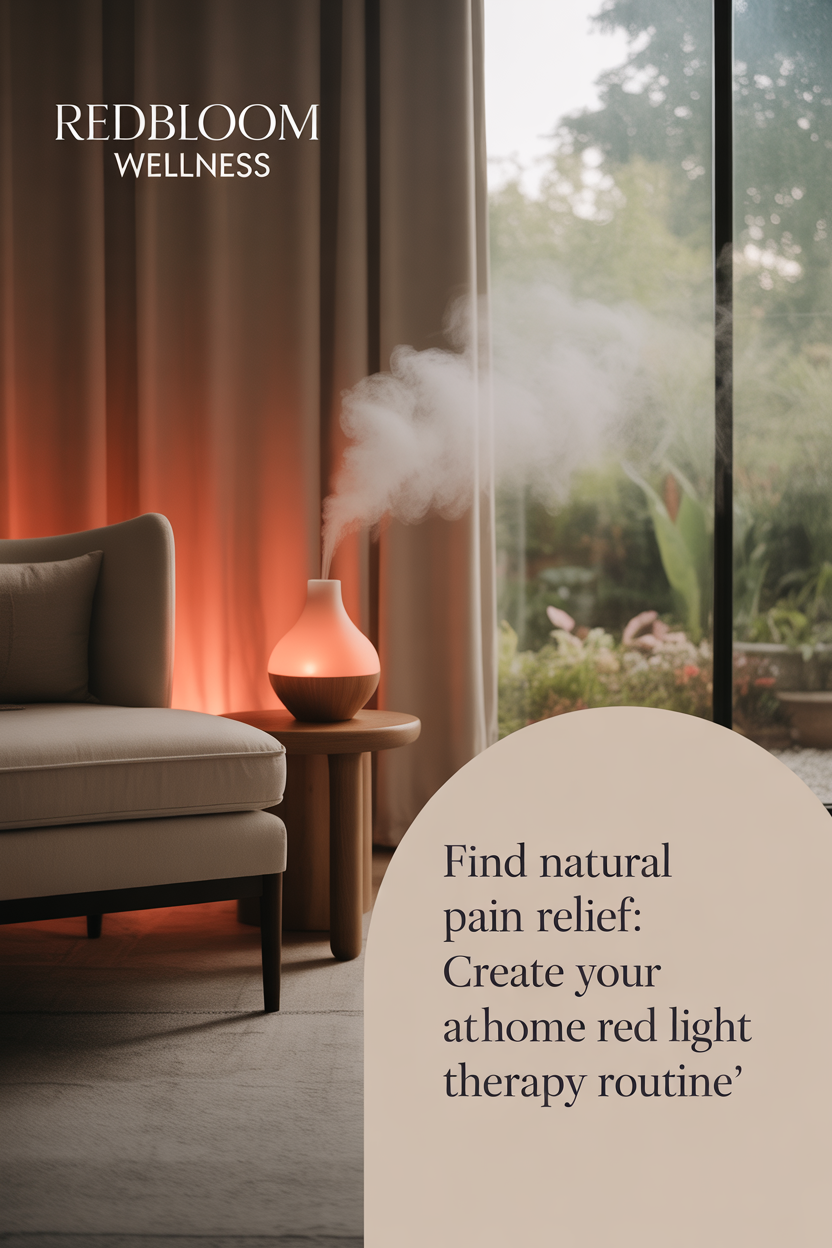
To get the best results from red light therapy for arthritis, you need to be consistent and use it properly. Creating a simple, daily routine is the best way to get lasting relief from pain and stiffness. Here are some simple tips to help you get started.
Try to have daily sessions, especially when you first begin. Consistency is more important than how long your session is. A dedicated 10- to 20-minute session each day will give you better long-term results than occasional, longer treatments.
Position the device correctly. For wearable pads or handheld units, the device should touch the skin over the sore joint. For panels, stand or sit about 6 to 12 inches away to let the light cover the area well.
Use the recommended wavelengths. As the research shows, a mix of red light (around 630-670nm) and near-infrared light (810-850nm and 904-1064nm) is best. Most quality devices designed for pain will offer these options.
Combine with gentle movement. As my story showed, using red light therapy with physical therapy or gentle movement can improve your results. Use the therapy before activity to reduce pain and increase blood flow, or use it after to help with recovery.
Listen to your body. While red light therapy is very safe, it’s always smart to pay attention to how your joints feel. You should notice a slow decrease in pain and an increase in mobility over several weeks of consistent use.
Be patient and persistent. Red light therapy works inside your cells to support your body’s natural healing. It isn’t an instant fix, but one that builds over time. Stick with your routine, and you can see significant, lasting improvement in your joint health.
What Should I Look For in an Arthritis Therapy Device?

Shopping for a red light therapy device can feel confusing. To make sure you buy a safe and effective product for arthritis, focus on a few key things. Focusing on these features will help you find a device that delivers real benefits.
First, check the wavelengths. Look for a device that offers both red light (in the 630-670nm range) and near-infrared (NIR) light. The best NIR wavelengths for deep joint treatment are between 810nm and 1064nm.
Next, consider the power output, often listed as irradiance (mW/cm²). A higher irradiance means more light energy reaches your tissues in less time. This leads to more effective treatments for deep issues like arthritis. Good brands are open about their device’s power.
Look for FDA clearance. While this isn’t required for all wellness devices, FDA clearance means the product has been reviewed for safety and effectiveness for its intended use, such as pain relief. The Celluma line, for instance, is FDA-cleared for pain management.
Think about the device’s design. Do you need a large panel for your back, a flexible wrap for your knee, or a small handheld device for your fingers? Choose a design that you will realistically use on a regular basis.
Finally, check the warranty and return policy. A good company will stand behind its product with a warranty of at least one year and a risk-free trial period. This gives you peace of mind and the chance to make sure the device works for you.
A Natural Way to Manage Your Arthritis Pain
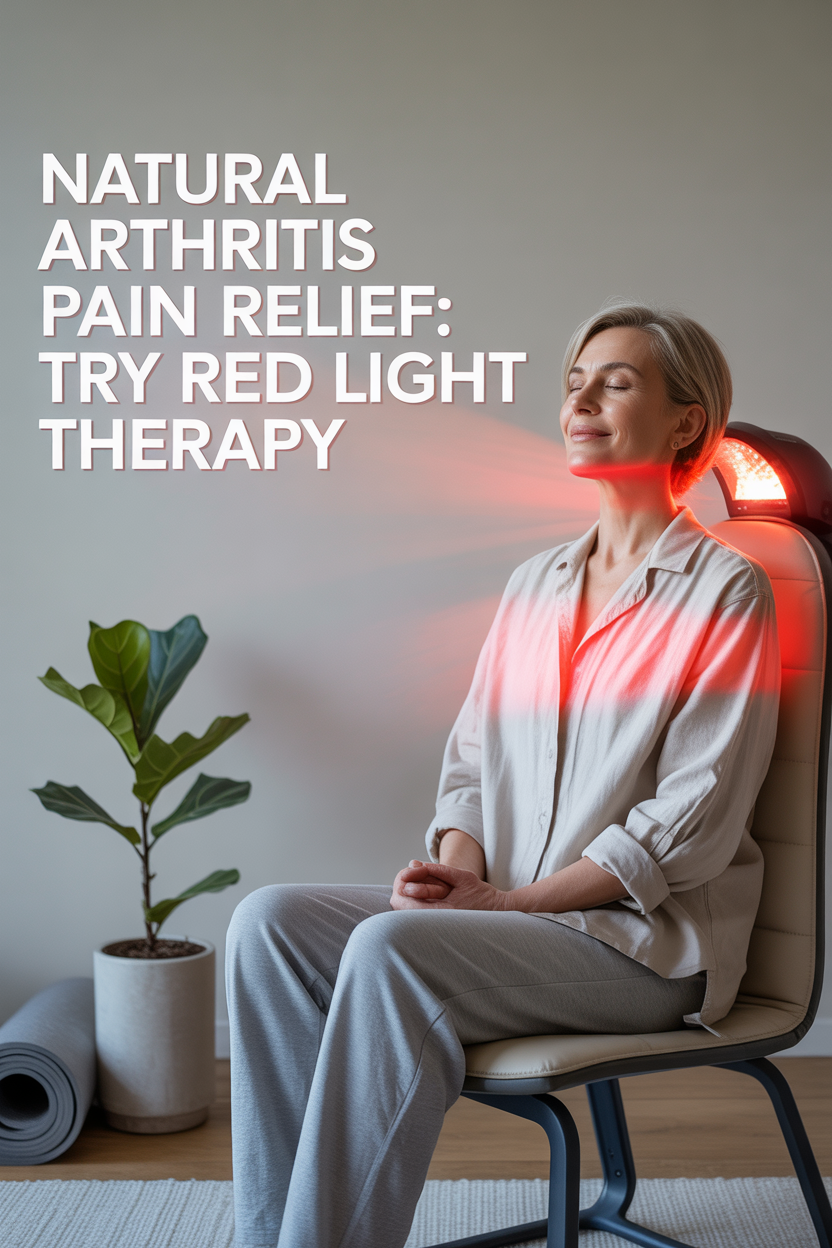
Red light therapy offers a research-backed, non-invasive method to manage arthritis pain and slow joint damage. By using specific wavelengths of light, it supports your body’s own healing powers at a cellular level. It reduces the inflammation that causes stiffness and pain, increases circulation to bring helpful nutrients to your joints, and provides a gentle, pain-relieving effect.
Unlike medications that can have side effects, photobiomodulation is a natural self-care tool that supports your body’s health without adding anything unnatural. It is available without a prescription and can be easily worked into your daily wellness routine at home.
The evidence strongly supports its use, with key wavelengths in the red and near-infrared spectrum showing consistent success in studies. As my own experience shows, when you combine it with a healthy lifestyle and gentle movement, it can be a wonderful way to reclaim mobility and live with less pain.
The safest way to choose a red light therapy device for arthritis is to use a trusted source. You can find more guidance in my comprehensive guide for pain relief and arthritis.
References
- Bjordal, J. M., Couppé, C., Chow, R. T., Tunér, J., & Ljunggren, E. A. (2003). A systematic review of low level laser therapy with location-specific doses for pain from chronic joint disorders. The Australian journal of physiotherapy, 49(2), 107–116. https://pubmed.ncbi.nlm.nih.gov/12775206/
- Brosseau, L., Welch, V., Wells, G., deBie, R., Gam, A., Harman, K., Morin, M., Shea, B., & Tugwell, P. (2000). Low level laser therapy for rheumatoid arthritis. The Cochrane database of systematic reviews, (2), CD002049. https://pubmed.ncbi.nlm.nih.gov/10796442/
- Gendron DJ, Hamblin MR. Applications of Photobiomodulation Therapy to Musculoskeletal Disorders and Osteoarthritis with Particular Relevance to Canada. Photobiomodul Photomed Laser Surg. 2019 Jul;37(7):408-420. doi: 10.1089/photob.2018.4597. PMID: 31265376; PMCID: PMC6648198.
- Kim, S.S., Kim, Y.K. The effects of 830 nm and 904 nm low-level laser therapy on the cartilage and subchondral bone in the experimental osteoarthritis of rabbit. Lasers Med Sci 37, 237–243 (2022). https://doi.org/10.1007/s10103-021-03289-9
- Stausholm MB, Naterstad IF, Joensen J, et al. Efficacy of low-level laser therapy on pain and disability in knee osteoarthritis: a systematic review and meta-analysis of randomised placebo-controlled trials. BMJ Open 2019;9:e031142. doi:10.1136/ bmjopen-2019-031142
- Yeh, S. W., Hong, C. H., Shih, M. C., Tam, K. W., Huang, Y. H., & Kuan, Y. C. (2023). Low-level laser therapy for pain relief in patients with knee osteoarthritis: A systematic review and meta-analysis. PloS one, 18(10), e0292774. https://doi.org/10.1371/journal.pone.0292774


